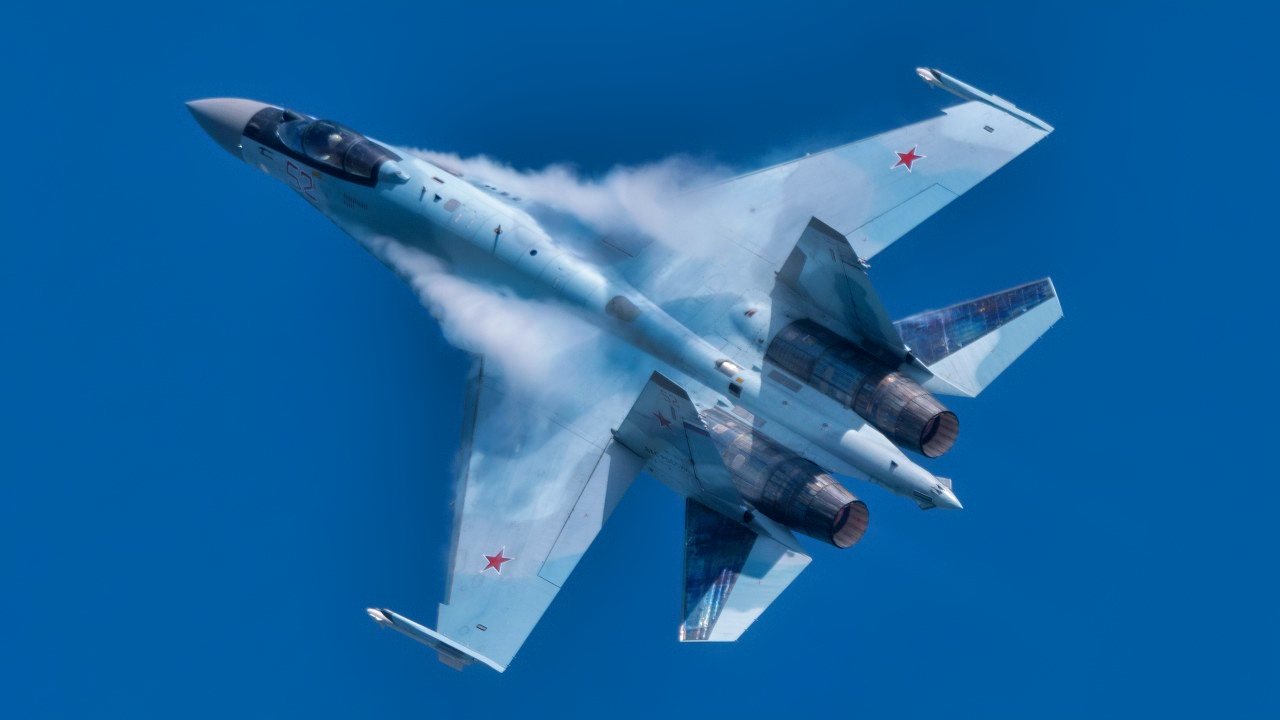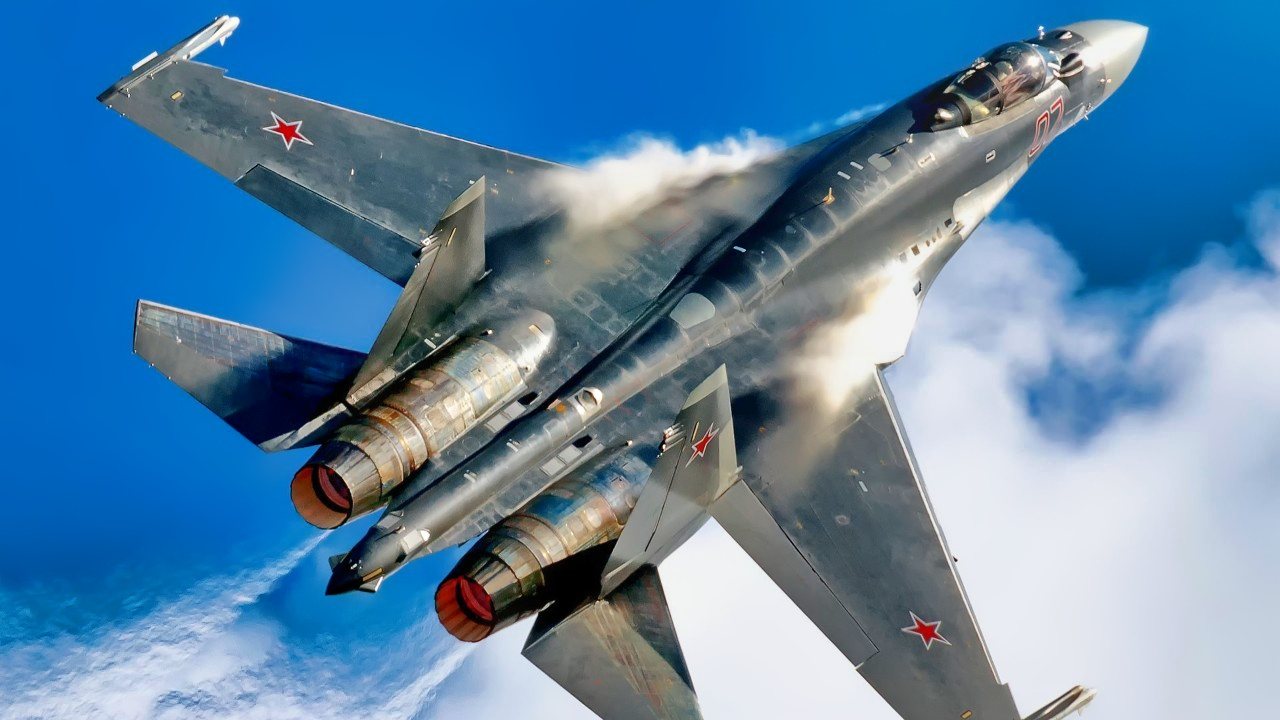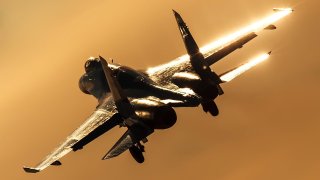The Su-35 Is One of Russia's Best Fighter Planes (And It Sold 24 to China)
In 2015, China made a significant strategic move by purchasing 24 Russian Su-35 fighters for over $2 billion, a deal completed in 2019. The Su-35, often described as a "fourth-generation++" platform, provides a bridge between fourth and fifth-generation warplane capabilities.
Summary and Key Points: In 2015, China made a significant strategic move by purchasing 24 Russian Su-35 fighters for over $2 billion, a deal completed in 2019. The Su-35, often described as a "fourth-generation++" platform, provides a bridge between fourth and fifth-generation warplane capabilities.

-This purchase highlights China's pragmatic approach to bolstering its military power without reinventing the wheel, allowing immediate enhancement of its air force capabilities.
-Moreover, acquiring the Su-35 helped China strengthen ties with Russia, gain insights into potential adversary technology, and support its large, diverse fleet's logistical needs.
-Despite the Su-35's capabilities, China remains focused on developing its indigenous advanced warplanes.
How China Got the Su-35 Fighter from Russia
In 2015, the People’s Republic of China and the Russian Federation agreed to an eyebrow-raising deal in which Beijing would purchase 24 units of Russia’s Su-35 for more than $2 billion. The order was completed in 2019. It was a significant move by Beijing, which was keen to rely less on foreign countries for its military needs.
The Su-35 has been dubbed by Russian defense officials as a “fourth-generation++” platform. In essence, it is a fifth-generation warplane in a fourth-generation body – not quite the equal of America’s F-35 Lightning II or its F-22 Raptor. Nevertheless, as the Russians would argue, this bird is a significant challenger to America’s self-proclaimed dominance in fifth-generation warplane technology.
China Is a Serious Power
Writing in 2020 in these pages, Michael Peck asserted that the Chinese purchase of these Su-35 warplanes from Moscow showed China “wasn’t ready for great power status.” That was, of course, a ridiculous notion. China is already a great power. If Washington does not play its cards better, China’s power will grow.
Beijing’s purchase of Russia’s Su-35 platform is less proof that China is an unserious power, and more likely an indicator of pragmatism. China isn’t interested in reinventing the wheel. If there’s a system that can help in its aim of becoming a major military power, and that system is available now, Beijing’s leaders will opt for it, rather than wait for entirely new systems to be engineered.
What’s more, it is obvious, from the perspective of 2024, that Beijing long desired to enhance its ties with Moscow as a buffer against Washington’s waning hegemony. One way to do that was for Beijing to make a significant purchase that boosts one of Russia’s primary industries: the defense sector.
And let’s not forget the need for Beijing to take a look under the hood of a vehicle that might one day threaten China. The long-term pattern of Sino-Russian relations is not that great. While Russia and China have, at times, moved closer against common foes, the two nuclear-armed neighbors have long regarded each other suspiciously. China can never be too careful. Purchasing the Su-35 likely gave the People’s Liberation Army the information it needed to see just what the Russians were building.

Further, Chinese engineers can conceivably imitate the design, having seen it. This is a key Chinese action. Incorporating essential aspects of the Su-35 into whatever warplane that China was indigenously fielding to do the mission that the Su-35 was intended to do was the point.
It should be obvious that the Su-35 is a decent plane. China would not have fulfilled the order had it not determined that the Su-35 could meet standards that China’s other warplanes were not meeting. But China remains committed to indigenously producing their own answers to the F-35 and F-22.
Contextualizing China’s Purchase…
Maintaining a fleet of warplanes as massive as China’s – it is the largest air force in the world – is a daunting task. That’s because the Chinese have a fleet of older warplanes, with newer ones coming online. Many of the older warplanes are Soviet-era systems. The logistics required to maintain such a complex fleet are considerable.
By purchasing more advanced Russian fighters, as Chinese military expert Fu Qianshao stated, China would “make the Chinese air force’s logistical support for the warplane fleet more efficient as there would be more spare parts and dedicated personnel.”

Author Experience and Expertise: Brandon J. Weichert
Brandon J. Weichert, a National Interest national security analyst, is a former Congressional staffer and geopolitical analyst who is a contributor at The Washington Times, the Asia Times, and The-Pipeline. He is the author of Winning Space: How America Remains a Superpower, Biohacked: China’s Race to Control Life, and The Shadow War: Iran’s Quest for Supremacy. His next book, A Disaster of Our Own Making: How the West Lost Ukraine, is due October 22 from Encounter Books. Weichert can be followed via Twitter @WeTheBrandon.
All images are Creative Commons or Shutterstock.
From the Vault
Russia Freaked Out: Why the U.S. Navy 'Unretired' the Iowa-Class Battleships
Battleship vs. Battlecruiser: Iowa-Class vs. Russia's Kirov-Class (Who Wins?)


